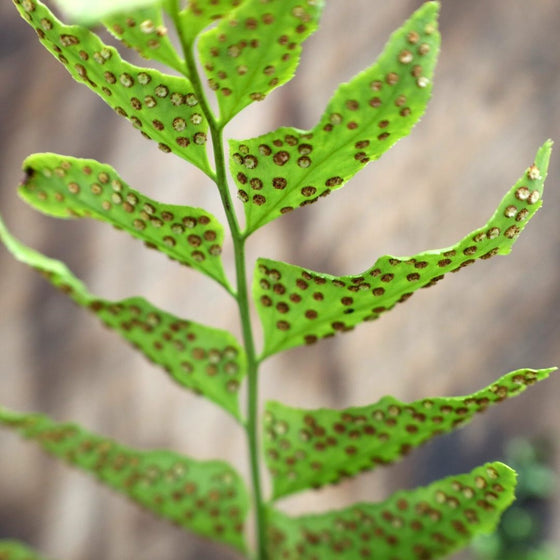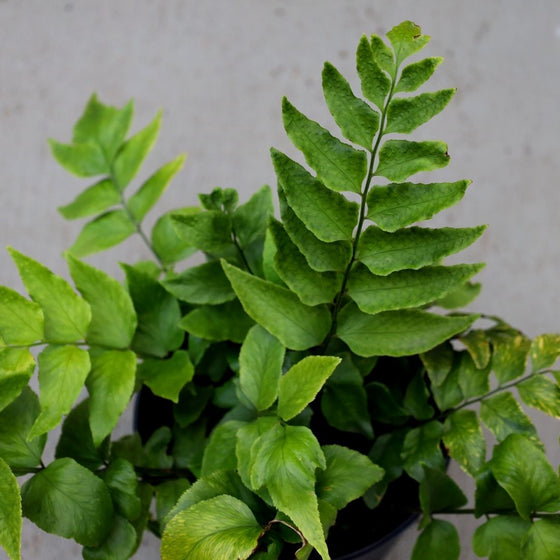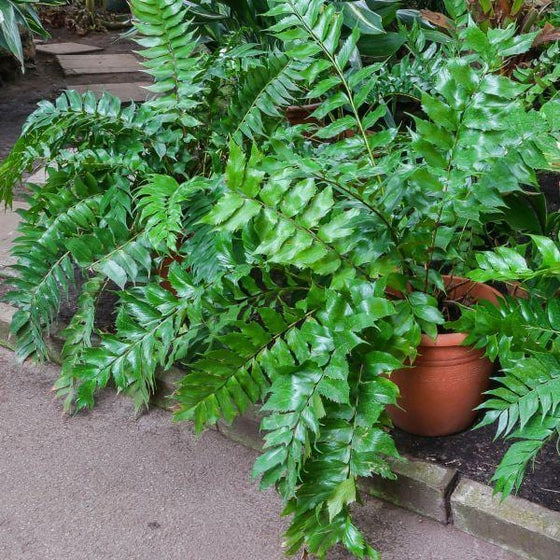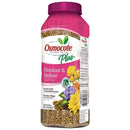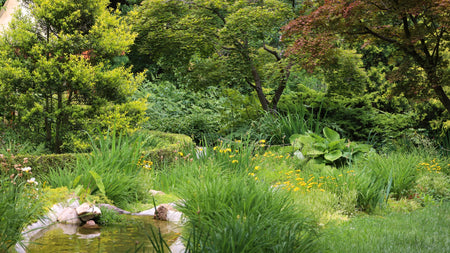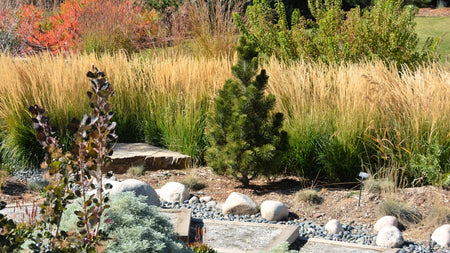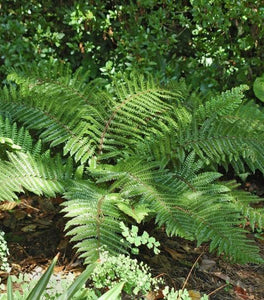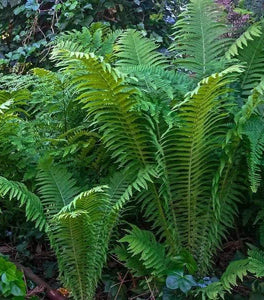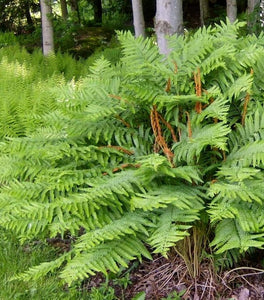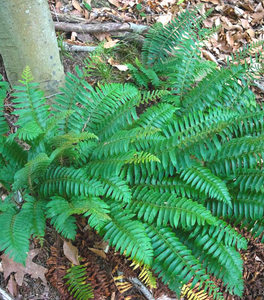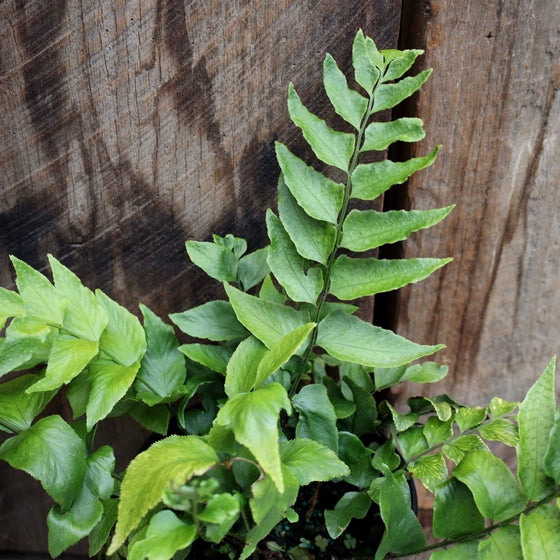
Images Depict Mature Plants
Holly Fern Plants for Sale Online
Holly Fern is an attractive evergreen fern known for its glossy, holly-like, deer-resistant foliage, which makes it elegant for shaded garden areas. The dark green, leathery leaves are composed of large, serrated leaflets resembling those of a holly plant, giving the fern its unique name. Holly Fern is perfect for creating year-round interest and is an excellent choice for adding structure and texture to woodland gardens, shaded borders, or as a foundation planting in the landscape. Thriving in USDA Hardiness Zones 6-10, this versatile fern is ideal for gardens in temperate to warm climates, where it can bring lush, bold greenery throughout the year.
Holly Fern grows to a mature height of 1.5 to 2 feet with an equal spread, forming a dense clump that serves as a striking accent or ground cover. Its unique foliage makes it a standout addition to container gardens, mixed perennial beds, and shaded foundation plantings. The fern's thick, arching fronds provide a strong visual contrast against the softer, finer textures of other shade-loving plants such as hostas, ferns, and astilbes. Holly Fern also does well in moist, well-drained soils and benefits from a bit of extra humidity, making it a great choice for areas with consistent moisture, such as near water features or shaded rain gardens.
Aside from its attractive appearance, Holly Fern is also relatively low-maintenance and deer-resistant, making it a reliable choice for gardens where browsing is a concern. This fern can tolerate a range of soil types as long as moisture levels are maintained, and it benefits from a layer of mulch to keep the roots cool and damp. Whether used in mass plantings, as a container plant, or as an elegant border addition, Holly Fern provides rich, green color and a unique texture that will enhance any shaded space, offering both visual interest and practical value throughout the year.
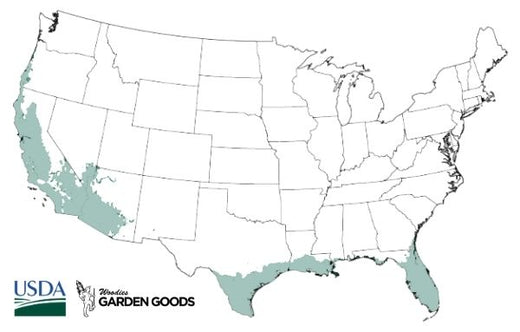
| Hardiness Zone: | 6-10 |
|---|---|
| Mature Height: | 1.5 to 2 Feet |
| Mature Width: | 1.5 to 2 Feet |
| Classification: | Green foliage |
| Sunlight: | Bright indirect light to mostly shade |
| Habit: | dense |
| Flower Color: | Does not flower |
| Foliage: | Green tight fronds |
| Soil Condition: | Must retain moisture |
| Water Requirements: | Does not like to dry out between watering |
| Uses: | Excellent individually or in a container or hanging basket, inside or out |
How to Care for Holly Fern
Before you buy a Holly Fern Plant, make sure to read about the care instructions that are recommended to keep this plant healthy and thriving.
How Do I Plant a Holly Fern Plant?
To plant a Holly Fern, start by selecting a location that offers partial to full shade, as this evergreen fern thrives in low-light areas where its glossy, holly-like fronds can shine. Prepare the planting area by loosening the soil and incorporating organic matter, such as compost or leaf mold, to improve soil fertility and drainage. Holly Fern prefers moist, well-drained soil, so ensure that the site will not be prone to standing water, which could lead to root rot. Dig a hole slightly larger than the fern’s root ball, placing the plant so that the crown is at or just above soil level. Backfill with the enriched soil, firm it down gently to eliminate air pockets, and water thoroughly to help the roots establish. For optimal growth, space multiple Holly Fern plants about 18-24 inches apart to allow for their mature spread. After planting, it is crucial to maintain even soil moisture, particularly during the first growing season. Holly Fern does well with consistent moisture but also needs well-drained soil to prevent waterlogging. Adding a 2-3 inch layer of organic mulch around the base of the plant will help retain soil moisture, suppress weeds, and keep the roots cool in warmer weather. Mulch also helps mimic the fern’s natural forest floor environment, supporting healthier growth. Holly Fern is perfect for shaded foundation plantings, woodland gardens, and as a unique accent in containers. By following these planting steps, your Holly Fern will thrive, bringing lush, evergreen foliage to your garden year-round.
How Do I Water a Holly Fern Plant?
Watering a Holly Fern correctly is crucial for maintaining its glossy, evergreen fronds and overall plant health. Holly Ferns thrive in consistently moist soil, especially during the first growing season when establishing a strong root system is essential. To keep the soil evenly moist, water the fern deeply once or twice a week, depending on rainfall and the temperature. Aim to soak the soil around the base of the plant, but be careful not to overwater, as soggy soil can lead to root rot. Holly Ferns are happiest when they receive regular, deep watering rather than frequent, shallow watering, which helps encourage deeper root growth and greater resilience during dry periods. Once established, Holly Ferns are moderately drought-tolerant but still perform best with consistent moisture. In hot or dry weather, increase the watering frequency to ensure the soil stays damp but not waterlogged. Adding a layer of organic mulch around the base of the plant can also help retain soil moisture and reduce evaporation, which is especially important during warm summer months. Mulch also helps to keep the soil temperature consistent and mimics the natural forest floor environment, promoting healthier fern growth. With proper watering practices, your Holly Fern will maintain its vibrant, lush foliage, adding an elegant touch to shaded areas in your garden.
How Do I Fertilize a Holly Fern Plant?
Fertilizing a Holly Fern plant is important to keep its glossy, holly-like fronds lush and healthy throughout the year. Start by incorporating organic matter like compost or well-rotted manure into the planting area when establishing the fern to provide essential nutrients. Once planted, Holly Fern benefits from a light application of a balanced, slow-release fertilizer, such as a 10-10-10 formulation, in early spring before new growth begins. This will help provide the necessary nutrients for vibrant frond development during the growing season. Be sure not to over-fertilize, as too much nitrogen can cause the fronds to grow weak or leggy and reduce the plant’s overall vigor. In addition to spring feeding, consider adding a layer of organic mulch, such as leaf mold or pine needles, around the base of the Holly Fern to enhance soil fertility. As the mulch decomposes, it will gradually enrich the soil, providing a slow-release source of nutrients and mimicking the fern's natural environment. Holly Ferns generally require minimal fertilization beyond a yearly feeding, but for extra growth, you can use a diluted liquid fertilizer mid-season to give the plant a boost. Ensuring the soil remains rich in organic matter and maintaining a light, consistent feeding schedule will keep your Holly Fern thriving, with healthy, deep green fronds adding year-round beauty to your shaded garden spaces.

How Do I Prune a Holly Fern Plant?
Pruning a Holly Fern is an essential step to maintaining its health and ensuring it retains its attractive, glossy foliage. In late winter or early spring, before new growth begins, inspect your Holly Fern for any dead, damaged, or discolored fronds and remove them. Use clean, sharp pruning shears to cut the affected fronds at the base of the plant, making sure not to damage the crown where new growth will emerge. Pruning in early spring encourages fresh, vigorous growth and keeps your fern looking lush and tidy throughout the growing season. Removing older fronds also improves air circulation around the plant, helping to reduce the risk of fungal issues. Throughout the growing season, Holly Fern requires minimal pruning, but you can remove any yellowing or damaged fronds as they appear to maintain its neat appearance. Holly Ferns naturally produce new fronds throughout the growing season, and trimming away old or faded ones helps the plant channel energy into producing healthy, vibrant growth. Additionally, if your Holly Fern is planted in a container or a mixed border, keeping it pruned prevents it from becoming overcrowded, ensuring it complements other shade-loving plants in your landscape. By practicing regular pruning, you can keep your Holly Fern looking its best, with glossy, holly-like fronds that add year-round beauty and texture to shaded garden areas.

